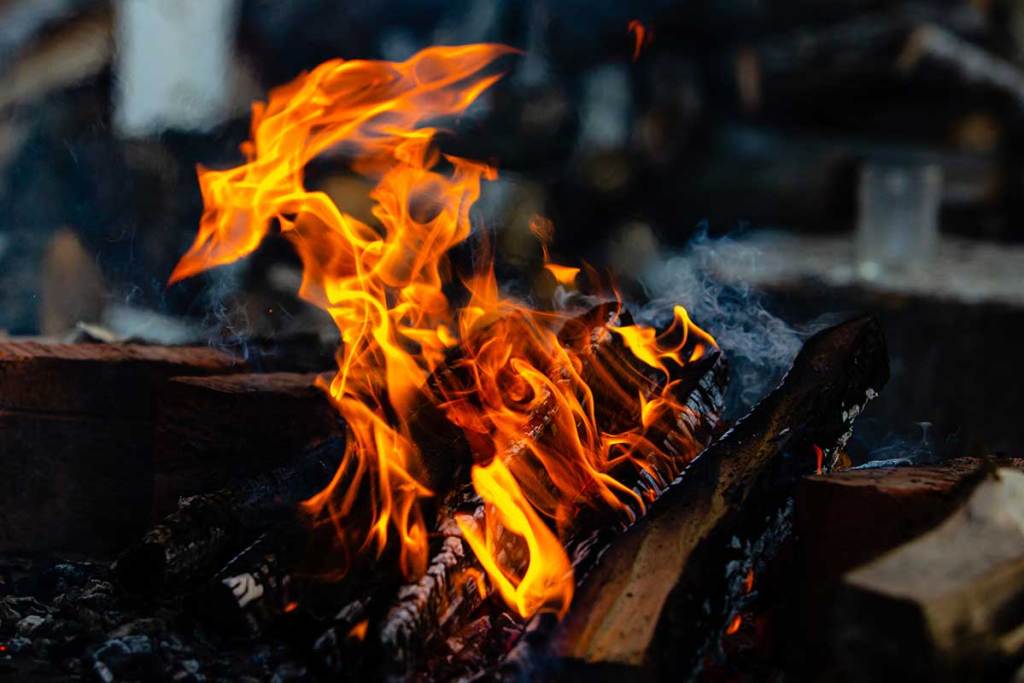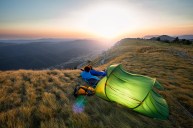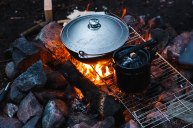Here are some clear cut campfire safety measures to remember, particularly so when the conditions are dangerously dry.
The potential for burn injuries and the spread of accidental wildfires are from different spectrums of the campfire safety encyclopedia. A fire at the campground, out in the backyard, or down at the lake usually comes with the minimal basics, but if you're being honest, do you know exactly what to do, and do you do it every time?
Carelessness around the campfire can lead to disastrous results, but with some strict rules of safety you'll have the foundation.
Here are a few simple tools to keep in mind when having a campfire, some tips, and a few things to be on the lookout for as you sit down to relax and enjoy the evening. It's never a bad time to brush up on your camping safety rules.
Selecting a Site
In some areas around the nation you may be asked to obtain a simple campfire permit, most of which are valid for one year or camping season. If that's not the case, at least know where to find and check up on the conditions, regulations, and local guidelines for campfires no matter where you're planning to have one. If you aren't 100% positive you can have a fire in that spot, don't proceed until you are.
This is one of the simplest ways to ensure a safe and happy existence around the fire ring, fire pit, or that campfire you just started in a dugout hole.
Choose your campfire location wisely by making sure to pick a spot that is open and away from any brush, leaf litter, dry grass, or dead pine needles. Clear away at leaf five feet of area around your location down to the bare soil to ensure that sparks cannot ignite a fire outside of your fire pit.
Your fire pit or ring should be scooped out enough to make sure that the open flames will rest well inside of the burn area with a circle of rocks or a metal ring if it's available.
Fuel

Nikolai Mentuk/Getty
To stay as safe as you can, cut all burning material into short-enough lengths to remain inside of the fire area as they burn. Never use lengths that can exist outside of the ring since they can burn through and fall outside of the campfire.
Your wood needs to be dry enough to light and burn down quickly; too wet, and your fire will smolder. Things like pine needles and leaves should be kept out of the fire. They either burn so fast that it can cause large flames, or they drown or smoke out the fire due to dampness. Neither outcome is all that safe.
Campfire Safety Tips
A fire should burn no larger than is necessary to be comfortable or to cook on. It is a good idea to keep a bucket of water, a shovel, and even a fire extinguisher near the fire in the event of flare ups or a fire that grows too large.
Never use any accelerants to start a fire, which means gasoline is off the table. Be smart, don't use anything that's so extremely volatile.
And of course, never leave your burning campfire alone or out of your line of sight, even if you must walk away for a moment. Ask a neighboring camper to help with an eye on your fire, and dedicate yourself to sticking it out, at least until you put it out.
Campfires and Wildfire Season
The threat of wildfires is real, and we've seen its effects over the last few years. It goes without saying that in some areas, camping and other outdoor activities may be cut short or canceled altogether in areas where wildfires are common or ongoing. In these regions, camping may be very difficult or banned completely. Campfires, in the traditional sense, might be prohibited.
It seems like dry leaves and a small breeze are all it takes to burn up acres of combustible land in the western U.S., and no one wants that. The U.S. Forest Service and Fire Protection agencies working to mitigate the wildfires can only do so much. California's wildfires alone damaged so many acres of public and private land that the wildlands may take years to recover. Decades, even.
We're not talking about prescribed, rejuvenating burns that help a forest or prairie thrive in the long run. We're talking about major catastrophes, threatening property and wild habitat, that should never come as a result of an outdoor enthusiast being careless.
Remember the Advice of Smokey Bear
Really, campfire safety doesn't have to come down to a science. Be smart about it. Think before you go. Have a foolproof way of extinguishing it, quickly and efficiently, should you need to. That's mostly it.
A wildland fire can burn up so much of what we love and enjoy about the outdoors that it's not worth endangering it all. Stay away from the flammable liquids, and learn how to build a fire with basic supplies. You'll thank yourself, and have a cool skill to pass on to someone else.
The safety measures for fire burning should be clear cut. Obey all burn bans and fire restrictions, especially when dry, hot conditions last for a long time. And when you devote yourself to a safe campfire, do it earnestly and to completion.
And above all, enjoy yourself, because a fire on a camping trip can be some of the greatest moments of your time spent outdoors.
Looking for a new way to display those antler sheds? Go to Rack Hub and use the coupon code Craiger. Be sure to follow my webpage, or on Facebook and YouTube.
NEXT: CAMPFIRE COOKING 101: THE BASICS TO KNOW AND THE GEAR TO HAVE




